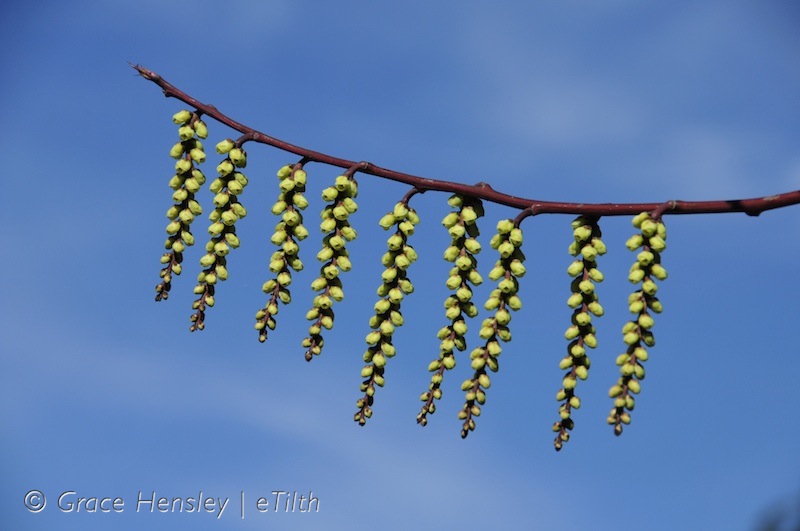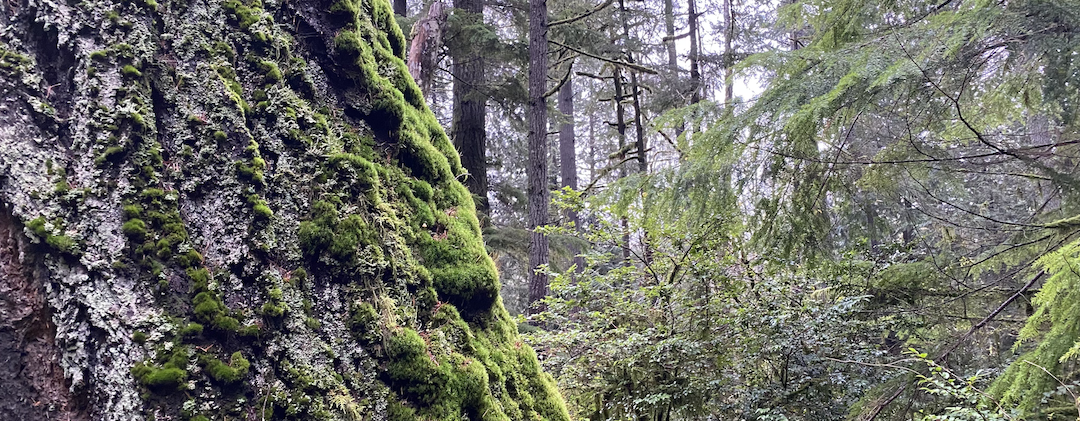So I was really excited to start researching this unusual shrub. And I was blown away … by how boring it is. Sorry, Dan. Just not doing it for me.
Gosh, I tried. I searched the Arboretum plant list, and printed out a map, filled in the locations and started off with my camera.

After a short while, I found a few bedraggled specimens of S. himalaicus. Yep, here it is in all its shrubby glory:

In The Explorer’s Garden, Shrubs and Vines, Dan Hinkley recounts a rather harrowing tale of finding S. himalaicus in remote Nepal, chased by the Maoist rebels. He describes,
“The Stachyurus was impressive in the length of the infrutescence, to 7in., and we collected its fruit while waiting for water to be boiled for tea.” [p.300] He continued,
“Though technically deciduous, in truth it is one of those shrubs that can never really decide to undress in autumn, and thus it stays cloaked and bedraggled in appearance. For this reason I have had little interest in cultivating it.” [p. 304]

Looking only slightly better, the Taiwanese Stachyurus chinensis and S. praecox round out the commonly available selections. Even Michael Dirr gives S. praecox a tepid review.
“I have only seen the plant in leaf, and then it has little to recommend it.” [p810, Manual of Woody Landscape Plants, 4th Ed. 1975]
While looking for an example of Taxus baccata, I found this large Stachyurus praecox in the Rose Garden at the Woodland Park Zoo.



OK, pretty enough against the right background. Maybe, I’ll give you a pass if you find S. praecox ‘Rubriflorus’, but Hinkley says that he has purchased pink selections in Japan in full bloom, and only to find that they never bloom pink in his own garden [p. 302]. If you really must have one, seek out S. chinensis ‘Magpie’, which at least would have interest once the flowers are over. S. salicifolia is also to be considered, again for the foliage.

But in all honesty, especially if you have a small garden, choose one of the Corylopsis, which blooms at the same time, with similar acid-yellow racemes. It won’t outgrow your space, and you can even fan-train it as they do at the Center for Urban Horticulture. And, it looks good all year.











